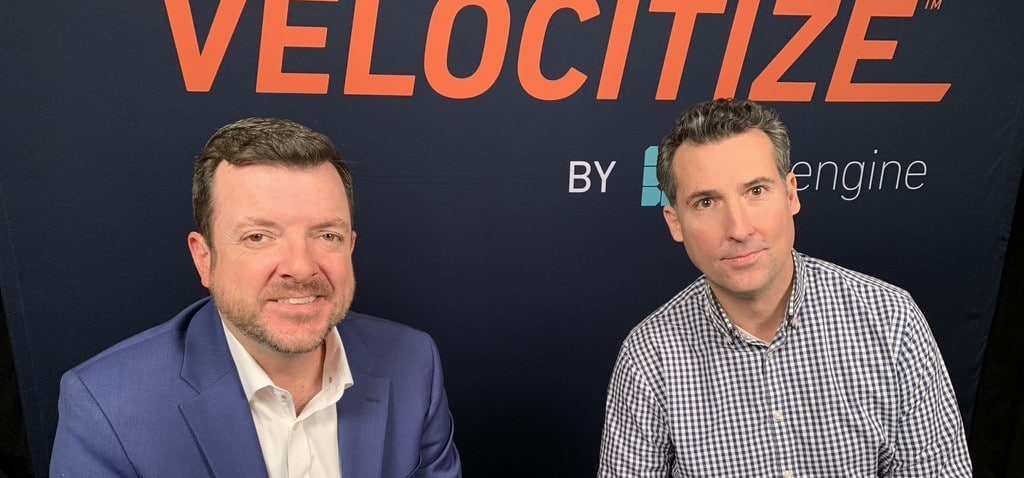This world of data that we’re in today, you don’t have to be an enterprise Fortune 500 commercial organization to take advantage of some really smart customer data platforms.
Kurt Voelker is Vice President of Business Strategy and Growth at Forum One, a full-service digital agency creating powerful experiences for mission-driven organizations. Voelker manages web development projects, identifies and cultivates new client opportunities, and guides the expansion of Forum One’s product line.
In this episode of Velocitize Talks, Kurt Voelker shares his thoughts on mission-driven organizations and connecting with your audience.
The new nonprofit leadership (1:26)
There’s a new generation of NGO [non-governmental organization] leaders who grew up digitally native and are transforming the way. The folks that are really trying to effect change, it’s a younger generation. They’ve got all the same sensibilities of the folks that are trying to sell Sprite and Coke and Nike shoes.
Forum One’s work with NGOs and mission-driven organizations has helped many transform how they connect with their audiences. The agency worked with the Smithsonian National Museum of Natural History to redesign their website into an audience-driven interactive experience.
Forum One has also partnered with the Elizabeth Glaser Pediatric AIDS Foundation to reinvent its content strategy while increasing calls-to-action.
The need for data (4:25)
Data is really important for mission-driven organizations…how they gain trust and transparency shows the impact that they’re having. Data is becoming increasingly important for everything from the media to decision-makers and policy-makers. Data platforms for them to better manage their business intelligence are critical.
A study by Data Crunch found that despite the fact that 90% of nonprofits gather data, only 5% use it. Only 40% of nonprofit professionals said they use data “very often” in their decision-making process. According to HubSpot’s “The State of Data in the Nonprofit Sector,” the top five factors preventing nonprofits from using their data are:
- Not enough time to focus on data
- Lack of experience with data
- The data isn’t kept in one place
- Lack of tools to help analyze data
- Failing to collect enough data
Stories to tell (7:21)
It’s really trying to understand who it is that you’re trying to reach, what’s motivating them, and connecting that to the real core brand attributes that you’re trying to evoke. For the organizations [it’s about] helping them understand who they are and who they want to be so they connect with the folks they want to connect with in ways that are authentic.
It’s well-documented that people tend to engage after experiencing content that resonates with them. Forum One has built many campaigns on telling such stories through various platforms, from creating a new brand identity for the Smithsonian African American Film Festival to connecting data visualization and storytelling for the Georgetown Institute for Women, Peace and Security, as well as supporting its WPS index.
Another great example of visual storytelling can be found in The National Geographic Photo Ark, created to sound “the alarm for species at risk, one photograph at a time.”
Repurpose, repurpose, repurpose (7:54)
It puts added pressure on the content producers to be creating great stuff. It needs to be packaged in all sorts of different ways. For our clients, a lot of their core output is insights and ideas. You think of a policy paper that’s 40 pages of research representing three years of their work which isn’t the best stuff for Twitter.
There’s no reason not to repurpose existing content; it’s a tool used by many savvy marketers to showcase their best content, whether it’s evergreen or easily updated. You can promote it on different platforms, in an email newsletter, as an infographic, or, even better, in a video.
When promoting content on social media, consider the fact that most people aren’t seeing your posts for the first time. The half-life of a tweet is 24 minutes. So don’t worry about annoying anyone.
Social engagement (9:04)
I think folks like the World Economic Forum is a good example. [They] are doing a really good job with creating a brand perception and Instagram that is about the issues that they’re covering; it’s not just about themselves.
Fan base (10:14)
In order to get someone to go from curious to ‘I’m a passionate supporter,’ you’re probably not going to do that through a single user journey. You’ve got to create an experience that’s kind of layered so you have something that’s different for different people and hopefully you’re able to get them to…come back and engage more deeply in a different way.
From NGO to B2B, every organization loves to have raving fans. The question is how to turn users into fans. One strategy that never gets old? Building the ultimate user experience based on tapping into emotion. On this Social Media Marketing podcast (episode 392), Michael Stelzner interviews best-selling author David Meerman Scott about his book, Fanocracy: How to Turn Fans into Customers and Customers into Fans.
Expand your reach (11:29)
It changes the way organizations have to think about how they’re reaching their audiences. So, it means they have to think more like a political campaign or a canvasser. How do we really personalize that experience so it changes how you want to craft your message; how you think about the website itself, and what it should be doing or what it could be doing right. That’s what we should be asking.
According to Gartner, companies can expect a 16% increase in outcomes when that personalization is directed at helping a customer. IDC predicts that in just three years, 40% of the data collected from the customer journey will be used to create a better overall experience.
To learn more about Forum One, check out their website, follow them on Facebook and LinkedIn and on Twitter at @ForumOne. To keep up with Kurt Voelker, follow him on LinkedIn.
